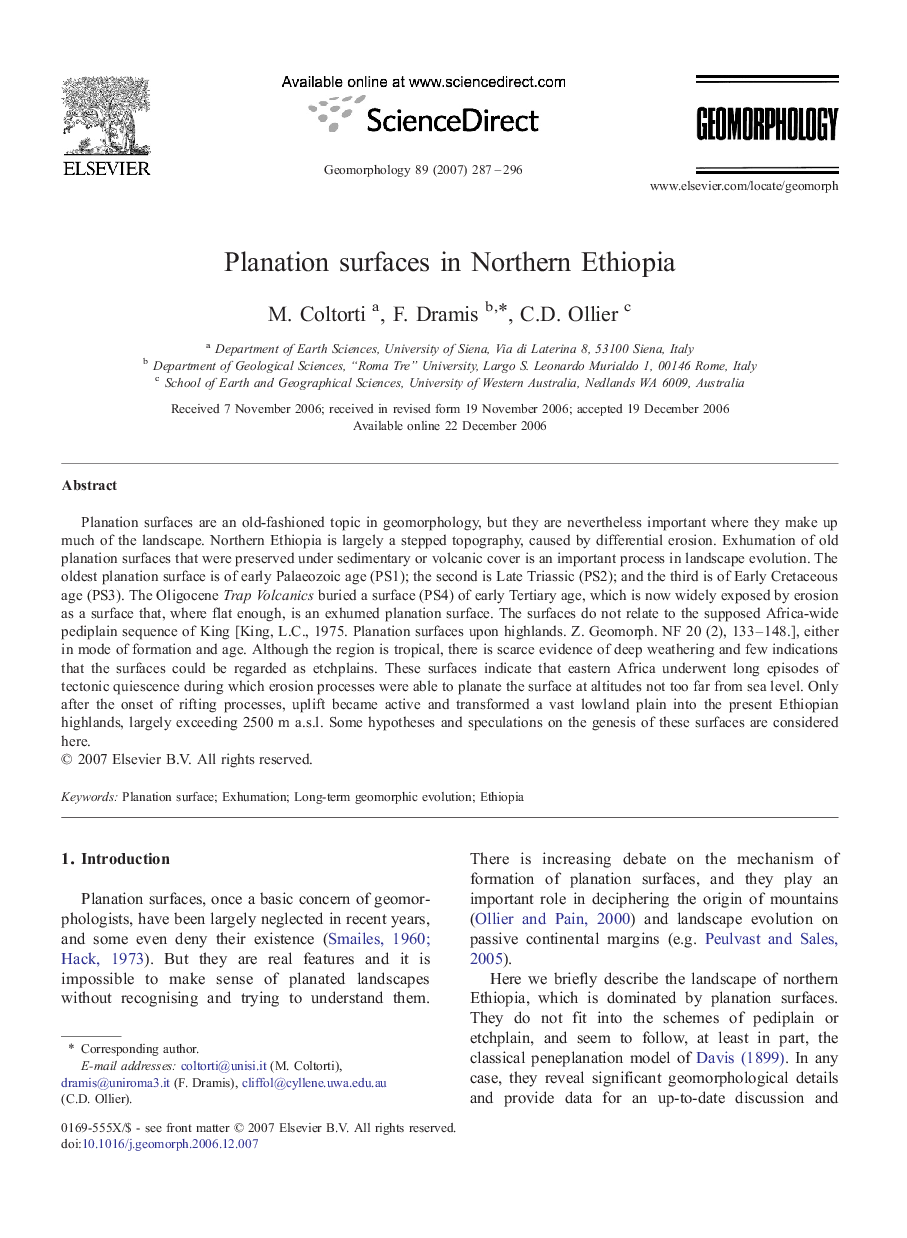| کد مقاله | کد نشریه | سال انتشار | مقاله انگلیسی | نسخه تمام متن |
|---|---|---|---|---|
| 4687183 | 1635574 | 2007 | 10 صفحه PDF | دانلود رایگان |

Planation surfaces are an old-fashioned topic in geomorphology, but they are nevertheless important where they make up much of the landscape. Northern Ethiopia is largely a stepped topography, caused by differential erosion. Exhumation of old planation surfaces that were preserved under sedimentary or volcanic cover is an important process in landscape evolution. The oldest planation surface is of early Palaeozoic age (PS1); the second is Late Triassic (PS2); and the third is of Early Cretaceous age (PS3). The Oligocene Trap Volcanics buried a surface (PS4) of early Tertiary age, which is now widely exposed by erosion as a surface that, where flat enough, is an exhumed planation surface. The surfaces do not relate to the supposed Africa-wide pediplain sequence of King [King, L.C., 1975. Planation surfaces upon highlands. Z. Geomorph. NF 20 (2), 133–148.], either in mode of formation and age. Although the region is tropical, there is scarce evidence of deep weathering and few indications that the surfaces could be regarded as etchplains. These surfaces indicate that eastern Africa underwent long episodes of tectonic quiescence during which erosion processes were able to planate the surface at altitudes not too far from sea level. Only after the onset of rifting processes, uplift became active and transformed a vast lowland plain into the present Ethiopian highlands, largely exceeding 2500 m a.s.l. Some hypotheses and speculations on the genesis of these surfaces are considered here.
Journal: Geomorphology - Volume 89, Issues 3–4, 15 September 2007, Pages 287–296